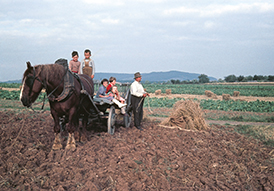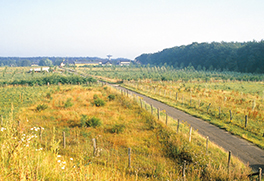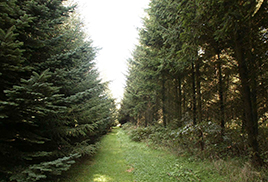New wood areas had been created at the edge of the airport, in order to compensate the forest loss suffered at the time of its construction and enlargement. The major part of this compensational forest is situated between the airport and the highway on the Senningerberg side and on the other side of the highway. At the beginning of the eighties of the 20th century a new forest had been created, playing an important protection role against the light, noise and view from the highway. In former times this area had been used for agriculture.
Structure and maintenance

Before the construction of the airport, the plain south from Senningerberg had been used for agriculture.
As this compensational forest is not a common forest, where ecological and economical aspects are valid, its first role is to protect against the noise and therefore its structure and maintenance has to be different.
Selection of the species

For this kind of forest a high diversity of the different tree species is important. You can find fast growing pioneer species like the birch, the poplar, the black locust or maple and the typical for this site beech and oak.
A lot of conifers (pine and spruce) and also been added, even if normally they do not make part of a natural grown broadleaf forest. They continue protecting against noise and view even in winter time when the other tree species have lost their leaf.
Forestry management

The forestry management aims here predominately the protection functions. If trees have to be cut down, this happens only by small bits, in order to preserve permanently the general density of the wood complete.
